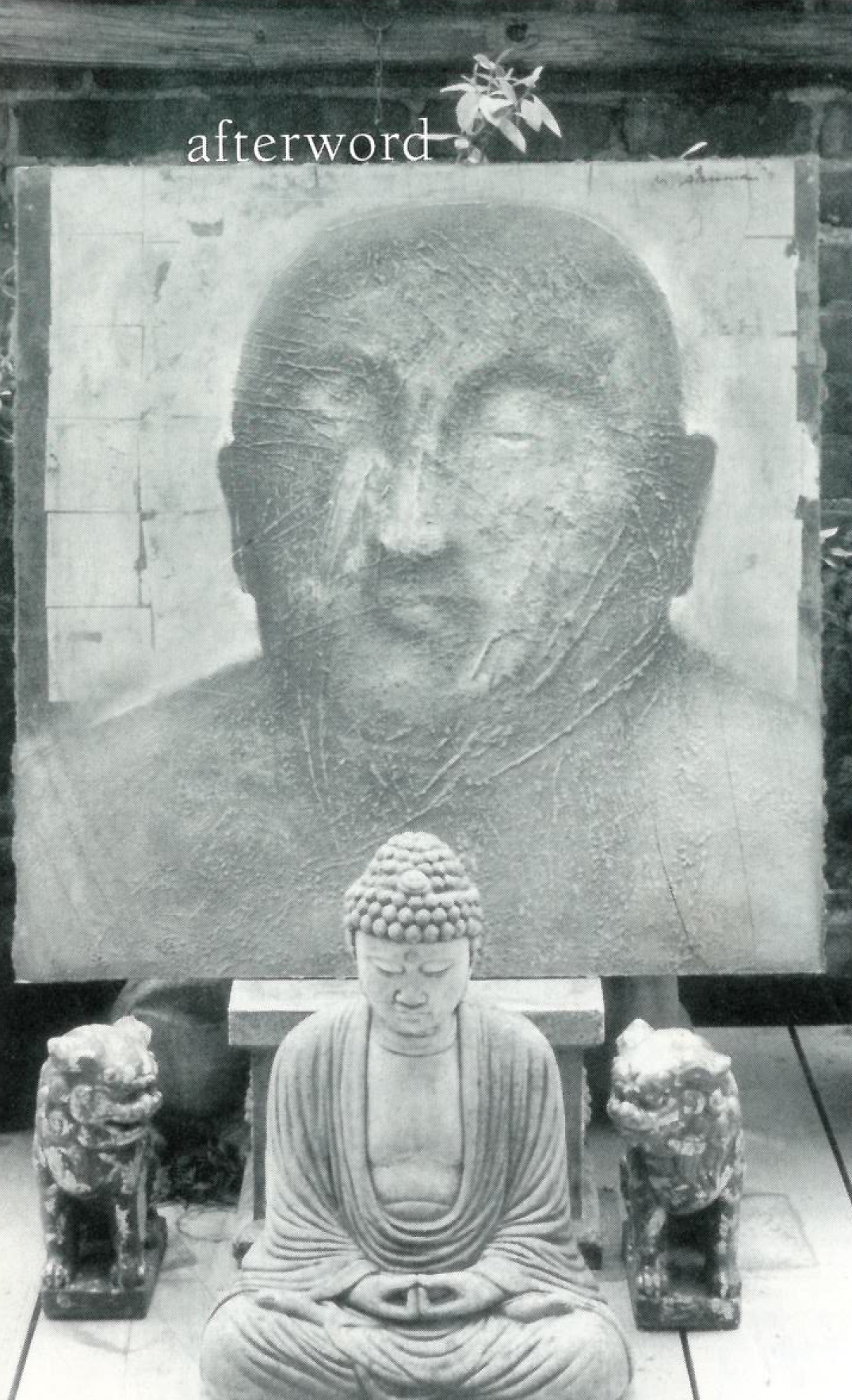
I am not a Buddhist although I have enjoyed Buddha’s company for many years. Cast in cement, he sits quietly on the deck outside my painting studio surrounded by lumpy concrete animals all purchased at Pizzarilli’s Lawn Decoratives, Inc. on Long Island. According to Pizzarilli Jr., Buddha was not a popular item. The pond frogs, he explained, kept the family business going. I got Buddha and two guard dogs at half price and loaded my menagerie – encased in bubble wrap – into the trunk of a rented car. My wife shook her head, not believing I’d actually bought these objects-not-art, and we headed back to New York City.
Over the years, Buddha and I have become good friends. He is bemused by my constant ravings about my artwork and the art world. He is patient with my ego. In turn, I treat him well, soaking him down with ice water during the muggy, blistering heat of summer and wrapping him in a wool hand towel to keep him warm during winter.
I am a figurative artist, but rarely do portraits, including my own. But a couple of years ago, I decided to paint a series of portraits of my old friend knowing that he wouldn’t complain that they didn’t look like him. I was preparing an exhibit called Lightrunners for a show in Tokyo, and at the suggestion of the gallery director, included two of Buddha’s portraits. In that series of paintings, I used the human energy field as a primary light source to illuminate the subjects. The gallery director was intrigued and seemed especially pleased with the golden light that surrounded Buddha’s head.
“The Japanese will be particularly interested that you paint Buddha’s light,” he commented.
It would have been hard to miss the Buddhist monk dressed in full robes at the opening. I watched him work his way through a crowd of black suits and stop in front of one of Buddha’s portraits. Motionless, he stood there for a long time. I watched him out of the corner of my eye as I frantically greeted guests, awkwardly bowing and exchanging business cards. My heart sank as the monk approached with a translator.
“Damn,” I thought, “he’s going to quiz me about Buddha’s teachings, or maybe he has problems with the images.”
“This monk,” the translator said bowing, “would like to ask you something.”
I bowed.
“He asks if you are a Buddhist.”
“No,” I answered.
“He would like me to tell you, then, that no Buddhist could paint Buddha this beautifully.”
The monk bowed, and when he lifted his head, I saw a broad grin spread across his face. I began to laugh. The monk laughed with me, and as he walked away to leave, I watched his purple aura squeeze through the door frame and disappear into the noisy street.
Marshall Arisman teaches illustration at New York’s School of Visual Arts.
Thank you for subscribing to Tricycle! As a nonprofit, we depend on readers like you to keep Buddhist teachings and practices widely available.